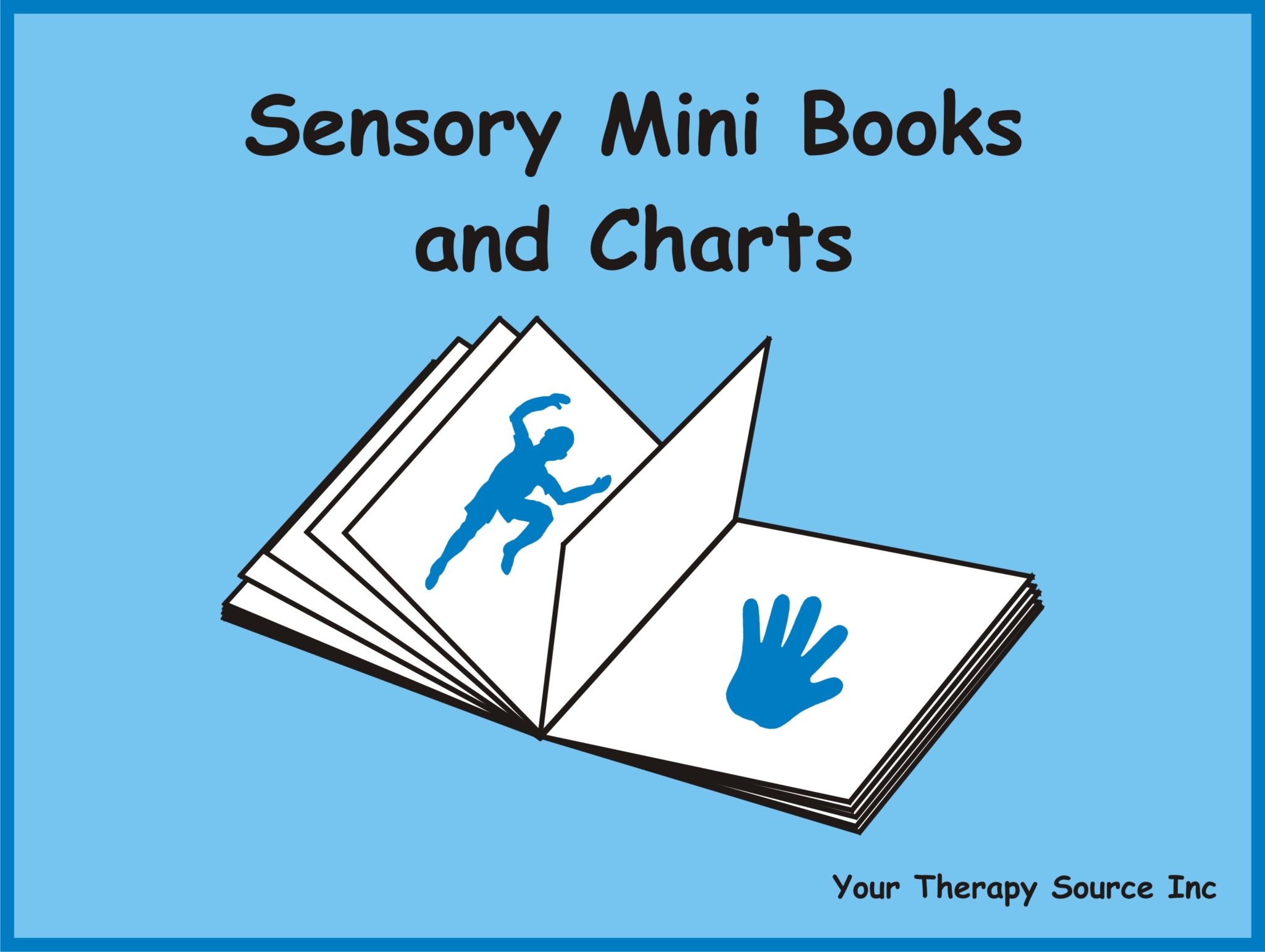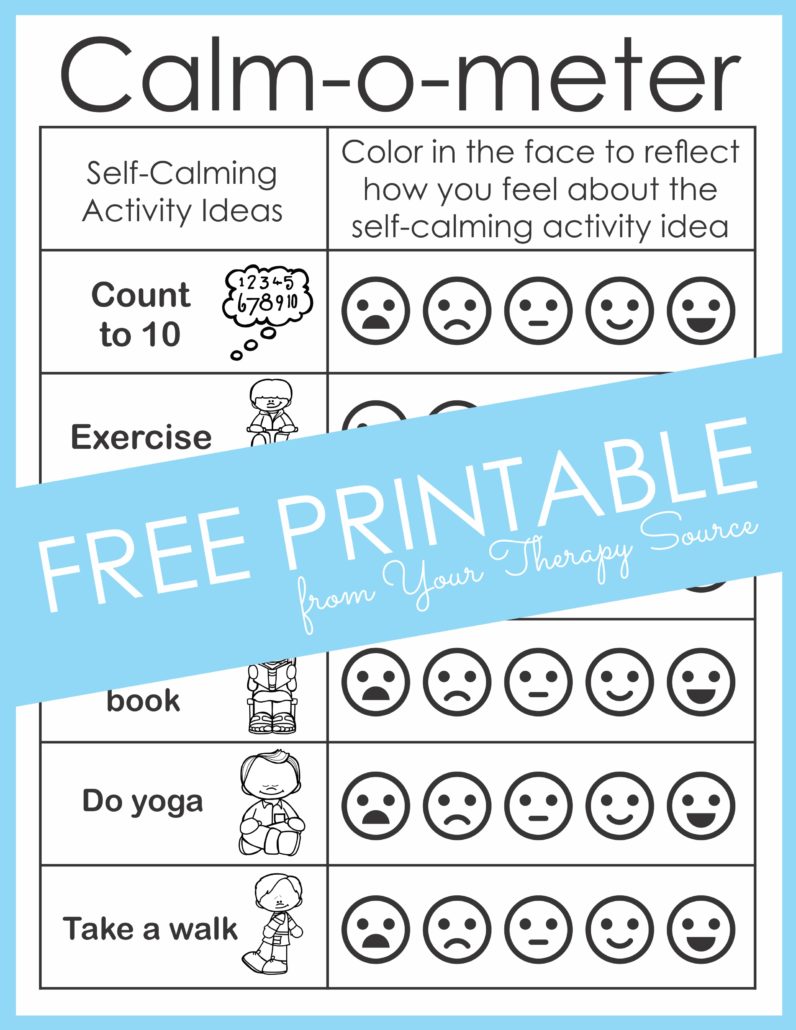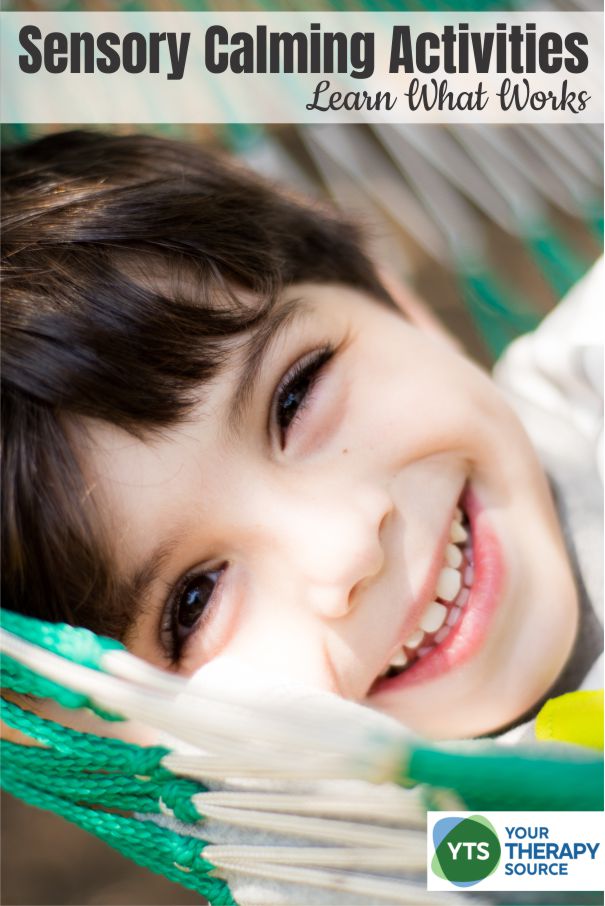Sensory Calming Activities – Learn What Works

There are many different sensory calming activities that children can do to help themselves self-regulate. Each child (and adult) has unique sensory preferences that can help them return their mind and body to a regulated, calm state.
You can download a FREE 2 page Calm-O-Meter packet too! Look for the green box.
10 Suggestions for Sensory Calming Activities
Here is a short list (and definitely not comprehensive) of some suggested sensory calming activities:
- deep breathing
- yoga
- take a walk or exercise
- counting to 10
- giving yourself a hug
- quite time
- listening to music
- use a swing
- rocking in a chair
- drink water from a straw
How Do You Determine What Sensory Calming Activities Will Help?
Every child is different and it is important to respect that and help guide them to find the best sensory calming activities. The time to explore these options is when the child’s body is ready to learn and listen. During a meltdown or emotional time, it is not necessarily the best time to be testing out all different options and just expect the child to be able to calm down.
Children may need to be guided or explicitly taught self-calming techniques. To begin with, depending upon the level of the child, explain to them what a “just right” state is when it comes to self-regulation. Explain that this is when their body and mind feels comfortable and ready to learn.
Then discuss different options that help people self-calm and get ready to learn if their emotions begin to escalate. When a child is in a calm state, help to problem solve what activities help the child to self-calm.

Sensory Mini Books and Charts
You can download 5 free printables to help children calm down here. Some suggested activities are yoga, deep breathing, calm down cards, etc. Discuss and review with children different emotions. Use visual supports to help the child determine what may work in the classroom for calming strategies.
If the child would like to, test out different techniques when the child is calm and see what options may feel “right” to them. Get feedback from the child whether they felt a certain sensory calming activity was beneficial or whether it would not help them to self-regulate.
Get Feedback with the Calm Meter
Try filling out the Calm-O-Meter to get a basic idea of what activities may help the child to calm down. Page one of the FREE download includes 6 self-calming ideas with picture symbols. On page two, children and/or adults can write down their own ideas and reflect on what techniques are successful.

What Sensory Calming Activities Should You Use When the Child is in a Meltdown?
When a child is already in a meltdown, children can call on the information they learned previously to learn how to self-calm with various techniques. Hang up the calming inventory Calm-O-Meter form to help a child remember what has been effective in the past to help with self-regulation and calming down.Once the child has achieved a calm state, here are some steps you can take to help the child grow and learn from the situation.
- Acknowledge that there was a problem. In a calm voice, say the problem to the child.
- Start a conversation to problem solve the situation. Begin your phrase with “Let’s”. For example – “Let’s think of what we can do next” or “Let’s talk about what might help”. Don’t provide the solution yourself. Stick to problem-solving the situation together. Discuss solutions and alternative solutions. Talk about how the child is interpreting the situation making sure he/she can see the bigger picture or understand a different perspective.
- Discuss what self-calming techniques the child utilized.
- Reinforce with the child how the technique was successful.
Self-reflection after the meltdown is important. This will help the child learn and grow from the situation to make it easier to self-calm the next time their emotions escalate.
Reference: Self-Regulation/ Self Control Tips and Strategies. Retrieved from the web on 4/12/18 at https://www.cdd.unm.edu/ecln/PSN/common/pdfs/ECNInclResourceGuide/SelfRegulationTipsandStrategies.pdf



